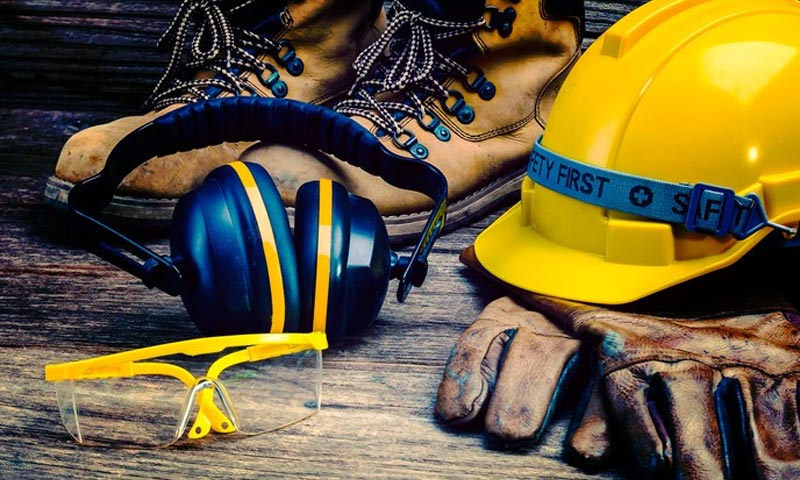In a variety of businesses, workers require personal protection equipment (PPE). Much of this equipment is reactive in that it is utilized after an accident or event. Reactive personal protection equipment includes such things as first-aid equipment or medications. Even a fire extinguisher, a piece of safety equipment required of all businesses and facemask required signs, is reactive in that you do not use it until after a fire has started.
For the most part, proactive personal protection equipment is more effective and safer than reactive equipment. For instance, gloves protect your hands before you experience a cut. Similarly, goggles protect your eyes, and respirators or air filters protect your lungs before you breathe in unhealthy levels of chemicals or dust. After the recent COVID-19 outbreak you’ll see facemask required signs in shops and premises, now they’re required by a lot of businesses.
Although different cities require businesses to have different types of protective equipment, the best strategy is having a variety of reactive and proactive devices on site for immediate use. Following are the top items proven to be the most effective in preventing accidents and preventing problems before they occur.
1. Smoke alarm
Smoke alarms are generally required for every room on the premises. However, for certain businesses, a carbon monoxide detector should also be incorporated into the smoke detector. When it comes to personal protective equipment, smoke alarms rank as one of the most effective safety devices. However, unbelievable as it might sound, some smoke alarms go unutilized because of battery issues. As a solution to this problem, smoke alarms are now equipped with smartphone features that signal when it is time to replace the battery.
When purchasing a smoke alarm, you should look for the following features.
– smartphone notifications
– capable of detecting carbon monoxide
– 85 decibels
– pulsating light
Note: a smoke alarm equipped with a pulsating light helps orient people during a fire because it is able to penetrate smoke and allow people to head for an exit.
2. Respiratory protection
Unlike the immediate threat of a fire that results in immediate danger to property and personnel, such PPE as gas and particle masks as well as whole-head air filters protect against immediate threats that have long-term consequences. For instance, in an ordinary furniture shop, the effects of breathing wood dust and chemical fumes might seem minimal if a worker goes without using his or her mask. However, over time, the effects are cumulative, leading to lung cancer or other respiratory conditions.
Because of this delay in effect, it is important to use breathing-related PPE even though the impact might not be readily apparent because in addition to the future health problems, businesses, themselves, can suffer profit losses from liability payments.
3. Gloves
Hand protection, such as nitrile gloves, can protect workers from chemicals. However, they are also among the best gloves for assisting with grip. Nitrile gloves are durable and even though they are thin, they are far better than rubber or latex at protecting hands.
Even leather gloves cannot compare because nitrile gloves are waterproof. In terms of protection against toxic material, norfoil gloves are the go-to solution. They help protect against the absorption of toxic material through the skin.
4. Hearing
Hearing protection is common, but it is one of the most unused pieces of equipment on the market. As such, it is important that every business include in its PPE policies the requirement, where necessary, that workers actually avail themselves of hearing protection.
Hearing protection can come in the form of buds or earphones. When selecting buds, it is important to select the ones that fit comfortably within the ear canal without leaving gaps. For this, expandable foam buds work well. They fit, expand, and protect easily and provide significant protection over the fully exposed ear.
For the most effective protection, of course, headphones are the best solution. They can provide protection against ongoing sounds and sudden high-pitched impact sounds.
5. Vision
PPE designed to protect your eyesight can come in the form of safety goggles that protect against foreign objects. However, they also can provide protection against damaging brightness and wavelengths, such as those available for welders. For a full selection, look for online safety retailers, such as Quill Safety.
6. Head protection
A head injury can be extremely dangerous. In some cases, such an injury can lead to permanent brain damage or death. Depending on the needs of the workplace, PPE for the head can vary slightly, but the most common types, such as hardhats, come with ventilation to help keep workers cool. Others come equipped with neck flaps to provide shade from the sun. Finally, there are protective types of headgear available that combine head and ear protection.
7. Damage control
Of course, it is impossible to be proactive in every situation. Sometimes accidents occur, and when they do, it is important to have on hand equipment capable of staunching wounds, wrapping cuts, and negating the effect of bacterial agents. For this, you should look for a standard safety first-aid kit that comes complete with gauze and disinfectant. However, so that you are ready for special situations, you should look for ones that are equipped with EpiPens that allow you to quickly assist people suffering from severe allergic reactions. These types of equipment are useful for transitional care for seniors.
By: Eric Reyes





